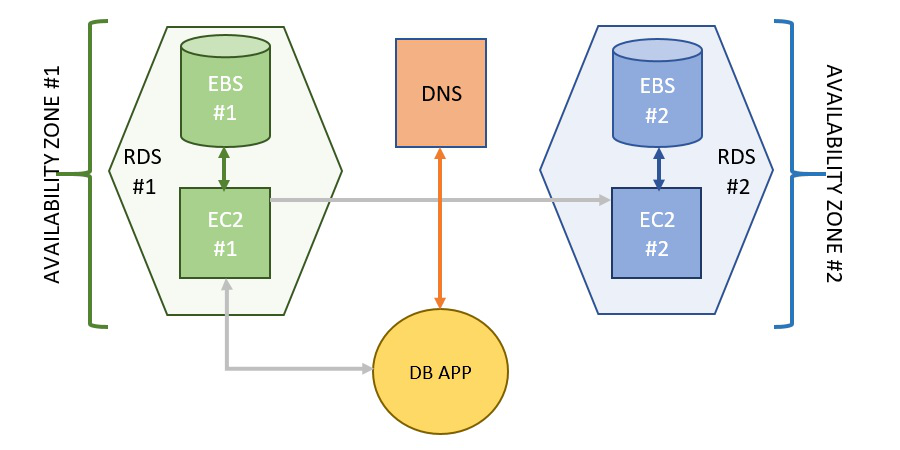In today’s data-driven world, managing and scaling databases can be a daunting task. Amazon Relational Database Service (Amazon RDS) offers a solution that simplifies database administration and allows businesses to focus on what matters most: innovation and growth. Let’s explore how Amazon RDS can transform your database management experience.
What is Amazon RDS?
Amazon RDS is a managed relational database service by Amazon Web Services (AWS). It provides an easy and efficient way to set up, operate, and scale relational databases in the cloud. Supporting popular database engines such as Amazon Aurora, PostgreSQL, MySQL, MariaDB, Oracle Database, and Microsoft SQL Server, Amazon RDS takes the heavy lifting out of database management.

Key Features of Amazon RDS
1. Automated Management
Managing databases manually can be resource-intensive. Amazon RDS automates routine tasks such as:
- Backups: Automated backups and point-in-time recovery ensure your data is safe and can be restored quickly.
- Software Patching: Automatically keeps your database engines up to date with the latest patches.
- Monitoring and Metrics: Integration with Amazon CloudWatch provides real-time insights and alerts about database performance.
2. Scalability
Amazon RDS allows you to scale your database according to your needs:
- Vertical Scaling: Adjust the compute and memory resources of your database instance with a few clicks.
- Read Replicas: Improve read performance by creating read replicas in different regions.
3. Availability and Durability
Ensuring your database is always available and durable is critical:
- Multi-AZ Deployments: Enable automatic failover to a standby instance in a different Availability Zone, ensuring high availability.
- Automated Backups: Daily backups and transaction logs enable point-in-time recovery, protecting your data against loss.
4. Security
Amazon RDS offers robust security features to protect your data:
- Encryption: Data can be encrypted at rest and in transit using AWS Key Management Service (KMS).
- Network Isolation: Deploy RDS instances within an Amazon Virtual Private Cloud (VPC) for network isolation.
- Access Control: Use AWS Identity and Access Management (IAM) to control who can access your databases.
5. Performance
High performance is crucial for database operations:
- Provisioned IOPS: Allocate dedicated storage for consistent and low-latency performance.
- Amazon Aurora: This MySQL- and PostgreSQL-compatible relational database engine delivers up to five times the throughput of standard MySQL and twice the throughput of standard PostgreSQL.
Use Cases
Amazon RDS is versatile and fits a wide range of use cases:
- Web and Mobile Applications: Scalable and reliable databases for dynamic applications.
- E-commerce Applications: Efficiently manage product catalogs, customer orders, and transactions.
- Enterprise Applications: Support traditional enterprise workloads with high availability and disaster recovery.
- Data Warehousing: Use Amazon Aurora for data warehousing with high throughput and low latency.
Setting Up Amazon RDS
1. Create a Database Instance
Setting up Amazon RDS is straightforward:
- Sign in to the AWS Management Console.
- Navigate to the Amazon RDS dashboard.
- Choose the desired database engine.
- Configure instance details like instance class, storage type, and allocated storage.
- Set advanced settings such as network, security, backups, and maintenance.
2. Connect to the Database
Connecting to your RDS instance involves:
- Retrieving the endpoint and port from the AWS Management Console.
- Using database client software or applications to connect using the provided endpoint, port, and credentials.
Best Practices
To maximize the benefits of Amazon RDS, consider these best practices:
- Security: Use IAM roles for access control, encrypt data, and regularly rotate credentials.
- Performance: Optimize queries, leverage read replicas, and monitor performance metrics.
- Backup and Recovery: Regularly test backups, enable automated backups, and configure point-in-time recovery.
- Cost Management: Select the appropriate instance type, use reserved instances for long-term savings, and monitor usage.
Conclusion
Amazon RDS offers a powerful, managed database solution that simplifies the complexities of database administration. With its automated management, scalability, high availability, robust security, and excellent performance, Amazon RDS empowers businesses to focus on innovation and growth while AWS handles the database infrastructure.
Whether you’re running web and mobile applications, e-commerce platforms, enterprise applications, or data warehousing, Amazon RDS provides the reliability and efficiency needed to succeed in today’s competitive environment. Embrace the power of managed databases with Amazon RDS and unlock new possibilities for your business.
